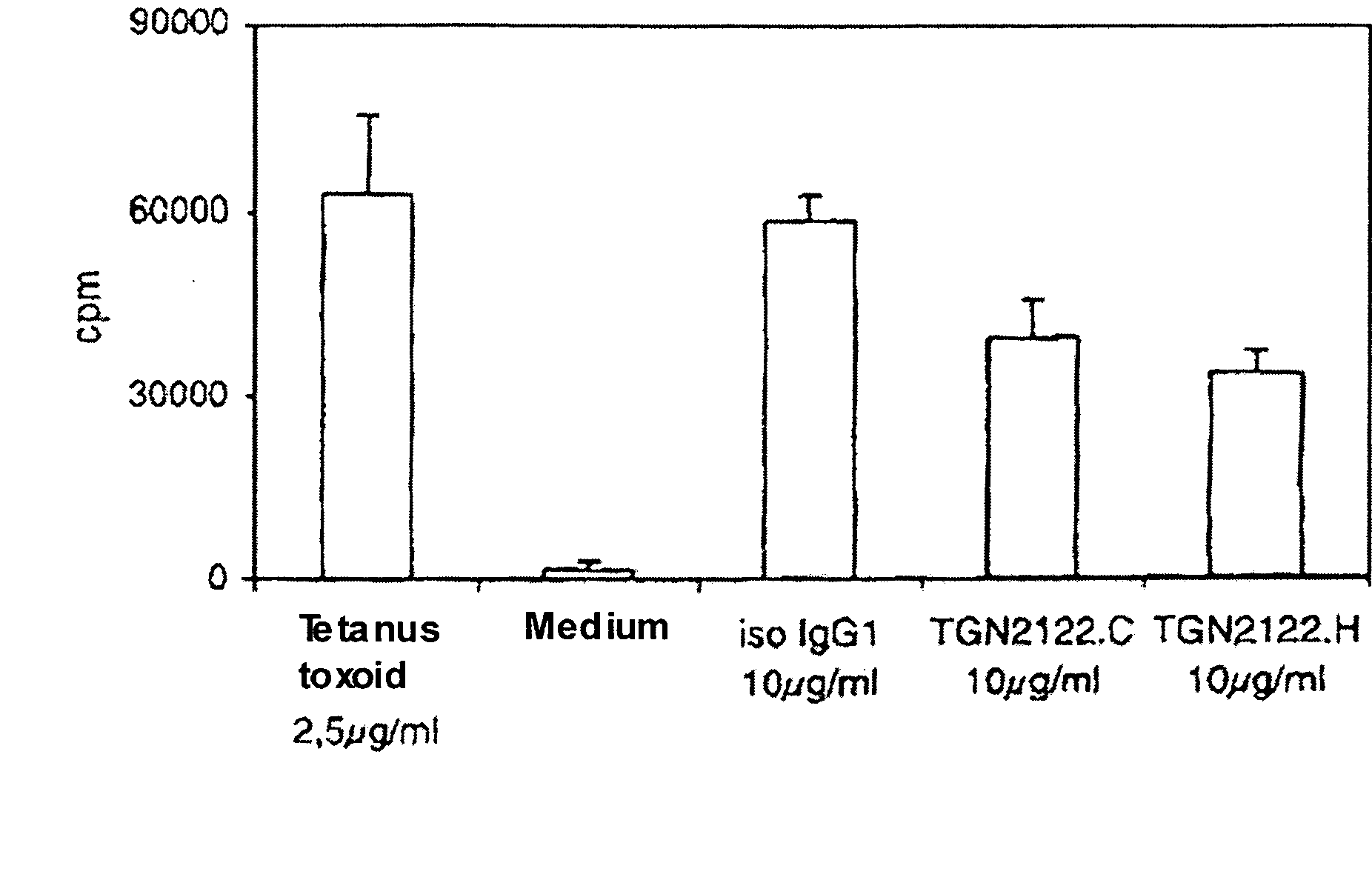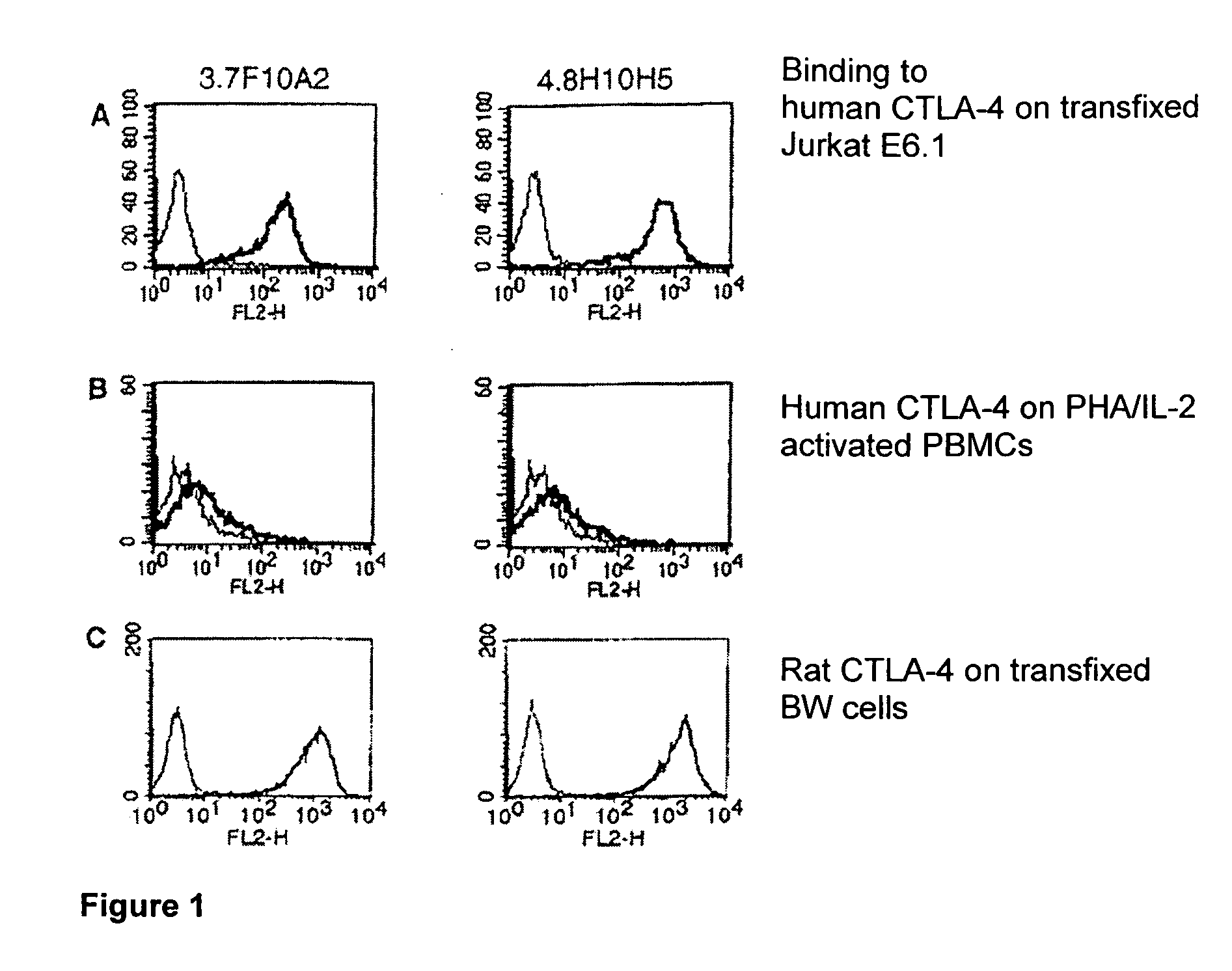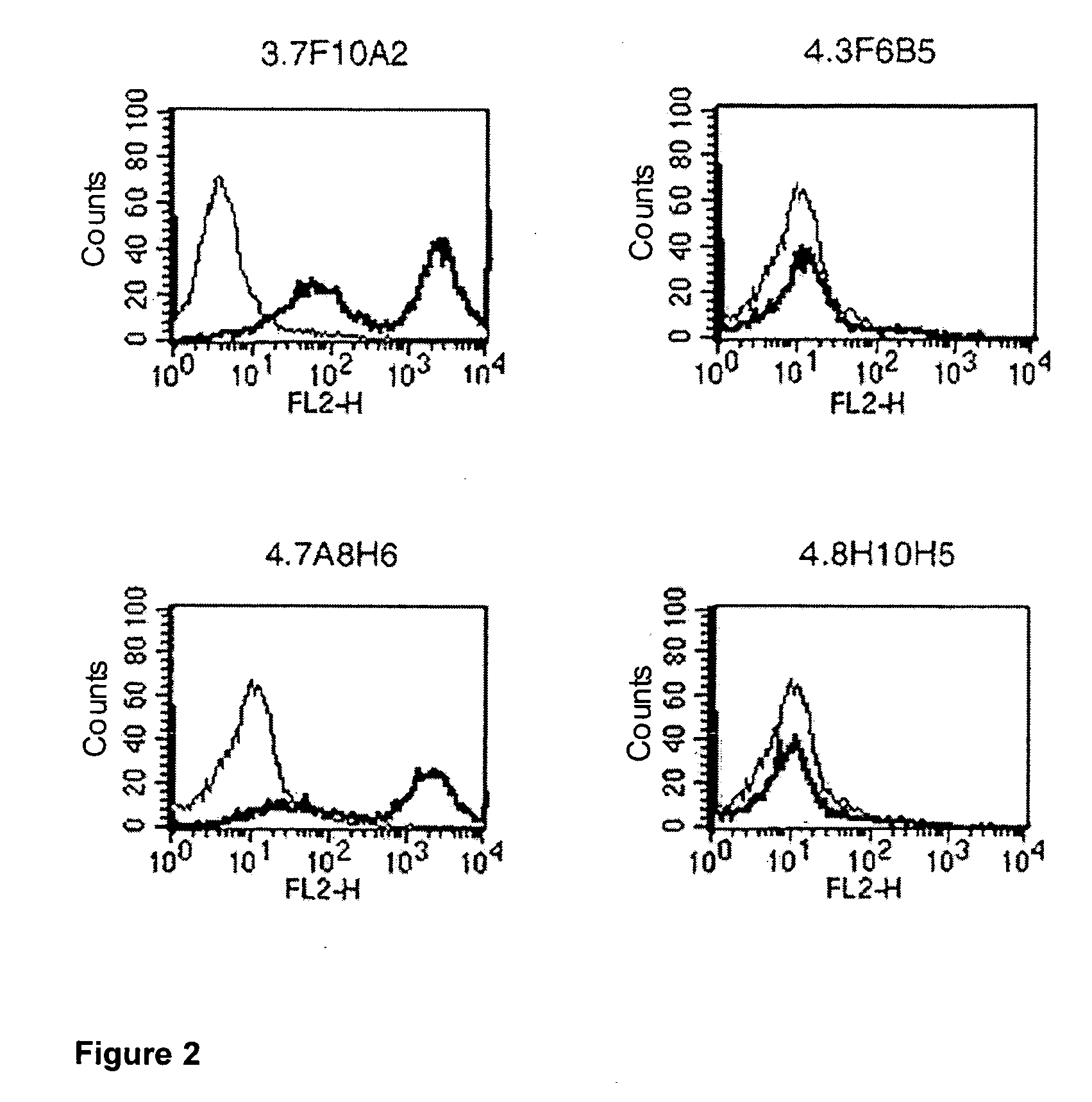Antibodies
a technology of antibody and ctla-4, applied in the field of antibody, can solve the problems of serious side effects, often accompanied by therapeutic effects, and achieve the effect of convincingly, demonstrating that the suppression of t cell activation through ctla-4 ligation in vivo could only be achieved
- Summary
- Abstract
- Description
- Claims
- Application Information
AI Technical Summary
Benefits of technology
Problems solved by technology
Method used
Image
Examples
example 2
The Effect of Antibodies in Accordance with the Invention Compared to a Reference Antibody Binding to the C″D Loop, as Well as Commercially Obtainable Anti-CTLA-4 Antibodies.
[0041]FIG. 4 shows the inhibiting effect of the anti-CTLA-4 antibody 4.8H10H5 on the proliferation of human PBMCs. The objective of this proliferation inhibition assay was to identify an antibody with a new type of function, compared to the already known CTLA-4 specific antibodies. An important characteristic of a superagonistic antibody was defined to be the ability to reduce the proliferation of human PBMC. Another criterion was that this effect can be observed with soluble, not artificially interlinked antibody. Those antibodies were evaluated positively, which reduced an anti-CD3 (or superagonistic anti-CD28; not shown) induced proliferation of the T cells by at least 25%. Readout system was the measuring of the proliferation with 3H thymidine incorporation. In this assay system, the CTLA-4 specific antibodi...
PUM
| Property | Measurement | Unit |
|---|---|---|
| concentration | aaaaa | aaaaa |
| time | aaaaa | aaaaa |
| concentrations | aaaaa | aaaaa |
Abstract
Description
Claims
Application Information
 Login to View More
Login to View More - R&D
- Intellectual Property
- Life Sciences
- Materials
- Tech Scout
- Unparalleled Data Quality
- Higher Quality Content
- 60% Fewer Hallucinations
Browse by: Latest US Patents, China's latest patents, Technical Efficacy Thesaurus, Application Domain, Technology Topic, Popular Technical Reports.
© 2025 PatSnap. All rights reserved.Legal|Privacy policy|Modern Slavery Act Transparency Statement|Sitemap|About US| Contact US: help@patsnap.com



